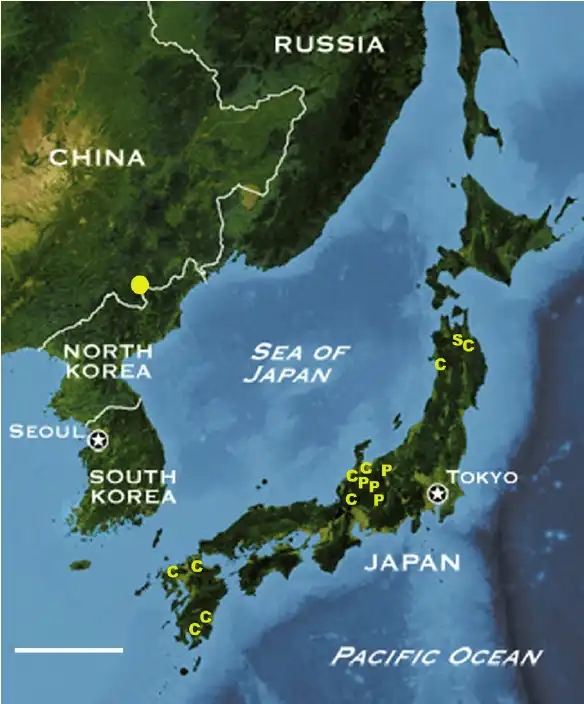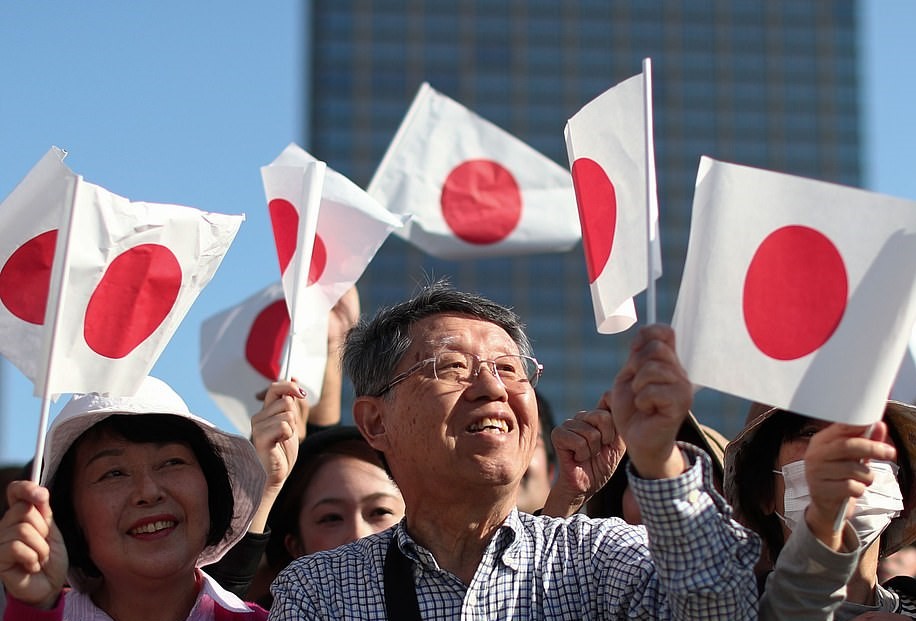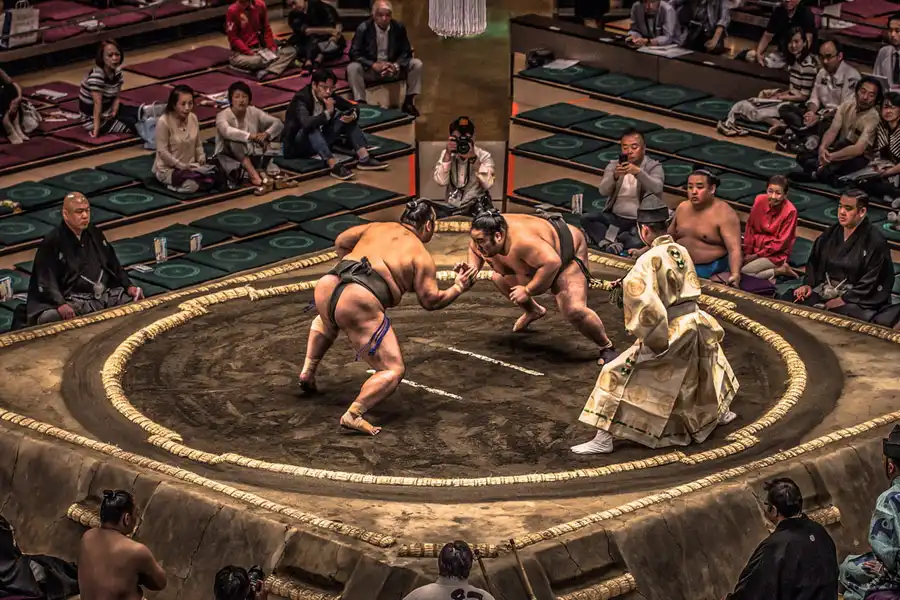Thursday, October 3, 2024
LITTLE STUDS ON JEANS
Wednesday, October 2, 2024
A TRADITIONAL GOAN DELICACY
Tuesday, October 1, 2024
AMAZING ANIMAL WORLD
Monday, September 30, 2024
DO YOU KNOW
Sunday, September 29, 2024
DO YOU KNOW
Saturday, September 28, 2024
LAND OF RISING SUN
Japan


The Geographical Explanation: Japan is located in East Asia, and it’s one of the first places in the world to see the sunrise every day. If you look at a map, you’ll see that Japan is east of China and Korea, stretching out into the Pacific Ocean. Because of its position, the sun rises in Japan before it rises in many other parts of the world. This geographical fact is a big part of why Japan is called the “Land of the Rising Sun.”

Historical Background: The name “Land of the Rising Sun” isn’t just about geography, though. It has deep historical roots. Long ago, China was a powerful and influential country in East Asia. The Chinese called Japan “Rìběn” (日本), which means “origin of the sun” or “sun’s origin,” because Japan is to the east of China, where the sun rises. Over time, this term evolved and spread, becoming a key part of how Japan is identified.

In the 8th century, Japanese emissaries to China started using the name “Nihon” or “Nippon” (日本) to describe their country. This name is still used today and directly translates to “origin of the sun,” reinforcing the idea of Japan as the place where the sun rises.

Cultural Significance: Japan’s association with the rising sun goes beyond geography and history; it is deeply embedded in its culture and national identity. The Japanese flag, known as the Nisshoki or Hinomaru, features a red circle in the centre, representing the sun. This simple yet powerful design symbolises the importance of the sun in Japanese culture.

In Japanese mythology, the sun goddess Amaterasu is a central figure. She is considered the ancestor of the imperial family and one of the most important deities in Shinto, Japan’s indigenous religion. According to legend, Amaterasu brought light to the world, and her descendants became the rulers of Japan. This myth further ties Japan’s identity to the rising sun.

- The Modern Perspective: Today, the nickname “Land of the Rising Sun” continues to be a source of pride for the Japanese people. It symbolises Japan’s unique position in the world, its rich cultural heritage, and its forward-looking outlook. The rising sun represents hope, renewal, and a bright future, which are values that resonate deeply in Japanese society.

Fun Facts About Japan
Now that we know why Japan is called the “Land of the Rising Sun,” let’s explore some fun facts about this amazing country!
Mount Fuji: Japan is home to Mount Fuji, an iconic and sacred mountain that is also an active volcano. It is the highest peak in Japan and a popular destination for hikers and tourists.
 Cherry Blossoms: Every spring, Japan celebrates the cherry blossom season, known as “Sakura.” The blooming of cherry trees is a beautiful sight, attracting people from all over the world to witness the stunning pink and white flowers.
Cherry Blossoms: Every spring, Japan celebrates the cherry blossom season, known as “Sakura.” The blooming of cherry trees is a beautiful sight, attracting people from all over the world to witness the stunning pink and white flowers.
 Technology and Tradition: Japan is famous for its advanced technology and futuristic cities. However, it also values traditional arts and crafts, such as tea ceremonies, calligraphy, and sumo wrestling.
Technology and Tradition: Japan is famous for its advanced technology and futuristic cities. However, it also values traditional arts and crafts, such as tea ceremonies, calligraphy, and sumo wrestling.
 Delicious Cuisine: Japanese food is loved globally. Sushi, ramen, tempura, and sashimi are just a few examples of the delicious dishes that originate from Japan.
Delicious Cuisine: Japanese food is loved globally. Sushi, ramen, tempura, and sashimi are just a few examples of the delicious dishes that originate from Japan.
 Politeness and Respect: Japanese culture places a high value on politeness and respect. Bowing is a common greeting, and there are many customs related to showing respect to others.
Politeness and Respect: Japanese culture places a high value on politeness and respect. Bowing is a common greeting, and there are many customs related to showing respect to others.
 Anime and Manga: Japan is the birthplace of anime and manga, which are popular forms of entertainment enjoyed by people of all ages around the world.
Anime and Manga: Japan is the birthplace of anime and manga, which are popular forms of entertainment enjoyed by people of all ages around the world.

Conclusion: Japan, the “Land of the Rising Sun,” is a country with a rich history, vibrant culture, and beautiful landscapes. Its nickname is a reflection of its geographical position, historical significance, and cultural heritage. From the stunning sunrise over Mount Fuji to the ancient myths of the sun goddess Amaterasu, Japan’s connection to the rising sun is a fascinating story that continues to inspire people around the world.
Friday, September 27, 2024
GREATEST PACE BOWLER OF INDIA
Kapil Dev
Dev made his debut in first-class cricket playing for his state, Haryana. He joined the Indian national team for a 1978–79 Test series against Pakistan. Although his tally of seven wickets over three matches in a losing effort was not the most spectacular of debuts, Dev played with great energy, possessing an impressive outswinger delivery and an aggressiveness that Indian cricket had not seen in a long while. In fact, Dev was India’s first genuine fast bowler, and he went on to lead the country’s bowling attack for the next two decades. He ended his Test career with a record 434 wickets in 131 Test matches (a record that was broken in 2000 by Jamaica’s Courtney Walsh), including 23 five-wicket matches. In one-day internationals, he took 253 wickets over 225 games.
Dev also made a mark as a hard-hitting middle-order batsman. In a 1978–79 Test series against the West Indies, he not only took seven wickets in the fourth Test but also scored 126 runs in the fifth Test to help India win the series. His attacking game, peppered often with huge boundaries (hits that cross the boundary of the field), helped him score 5,248 runs in 131 Tests (including eight centuries [100 runs in a single innings]) and 3,783 runs in 225 one-day internationals (with one century).
Dev was made the captain of the Indian national team in 1983. As a leader, he downplayed strategy and led by example. This was best seen in the 1983 Prudential Cup, when he almost single-handedly helped India defeat Zimbabwe with a 175 not out (his 175 runs were a career high). However, inconsistent performances led to his being relieved of the captaincy soon after the victory. He was even dropped from the side briefly in 1984. Nevertheless, Dev played several match-winning innings for India. The most famous of these include his “5 for 28” (taking five wickets while conceding only 28 runs) against Australia to give India victory in the 1981 Melbourne Test; taking nine wickets against the West Indies in 1983; scoring 119 off of 138 balls to save India from a Test defeat against Australia in 1986; and slamming four consecutive sixes (balls that pass the boundary without ever touching the playing field) against England in 1990. He became only the second player in cricket history to claim 400 wickets, and in 1994 he broke Richard Hadlee’s record of 431 wickets.
Dev retired in 1994 and had a brief but unsuccessful 10-month spell as the coach of the Indian national team from October 1999 to August 2000. In 1999 he was implicated in a match-fixing controversy that led to his coaching departure, but he was later cleared of all charges after an investigation conducted by India’s Central Bureau of Investigation. He was chairman of India’s National Cricket Academy from 2006 to 2007 but was forced out when he became an executive in the privately funded upstart India Cricket League (ICL). He left the ICL in 2012 and returned to the good graces of the Board of Control for Cricket in India (BCCI), the national governing body of Indian cricket. Kapil Dev was the greatest pace bowler India has produced, and their greatest fast-bowling allrounder. If he had played at any other time - not when Imran Khan, Ian Botham and Richard Hadlee were contemporaries - he would surely have been recognised as the best allrounder in the world. In any case he did enough to be voted India’s Cricketer of the Century during 2002, ahead of Sunil Gavaskar and Sachin Tendulkar. His greatest feats were to lead India almost jauntily, and by his all-round example, to the 1983 World Cup, and to take the world-record aggregate of Test wickets from Hadlee. It was the stamina of the marathon runner that took him finally to 431 wickets and only a yard beyond.
He might not have been quite the bowling equal of Imran, Hadlee or Botham at his best, and his strike rate was less than four wickets per Test, but he was still outstanding in his accuracy and ability to swing the ball, usually away from right-handers. And he could hit a ball even more brilliantly than he bowled it, with uncomplicated flair.
Kapil had a rather ordinary stint as India’s coach for 10 months between October 1999 and August 2000. At the height of the match-fixing allegation by Manoj Prabhakar - a charge that was subsequently dismissed - Kapil resigned as coach. Hurt by the betting controversy, he announced that he was leaving the game. However, he returned from a significantly quiet period when Wisden named him their Indian Cricketer of the Century. He won, and then returned to cricket as a bowling consultant and served as chairman of National Cricket Academy for two years. In May 2007, Kapil joined the breakaway Indian Cricket League, which led to his removal from the NCA.
A Fruit Rooted in Ritual, History, and Health
GRAPES 🍇 A Fruit Older Than Written History Grapes are among the earliest cultivated fruits known to humanity, with archaeological evidence...

-
ANNABELLE The real Annabelle doll is a well-known case of alleged paranormal activity, made famous by Ed and Lorraine Warren, two well-know...
-
WHY IS SUGAR WATER STICKY? Sugar water is sticky because sugar molecules have a strong affinity for water molecules, forming hydrogen bonds ...
-
What is Retro walking? Retro walking is backward walking, usually done as a form of exercise. It is claimed that 100 steps of backwar...













